Looking for a new year-round outdoor plant? Here's how to grow coral bells in the garden
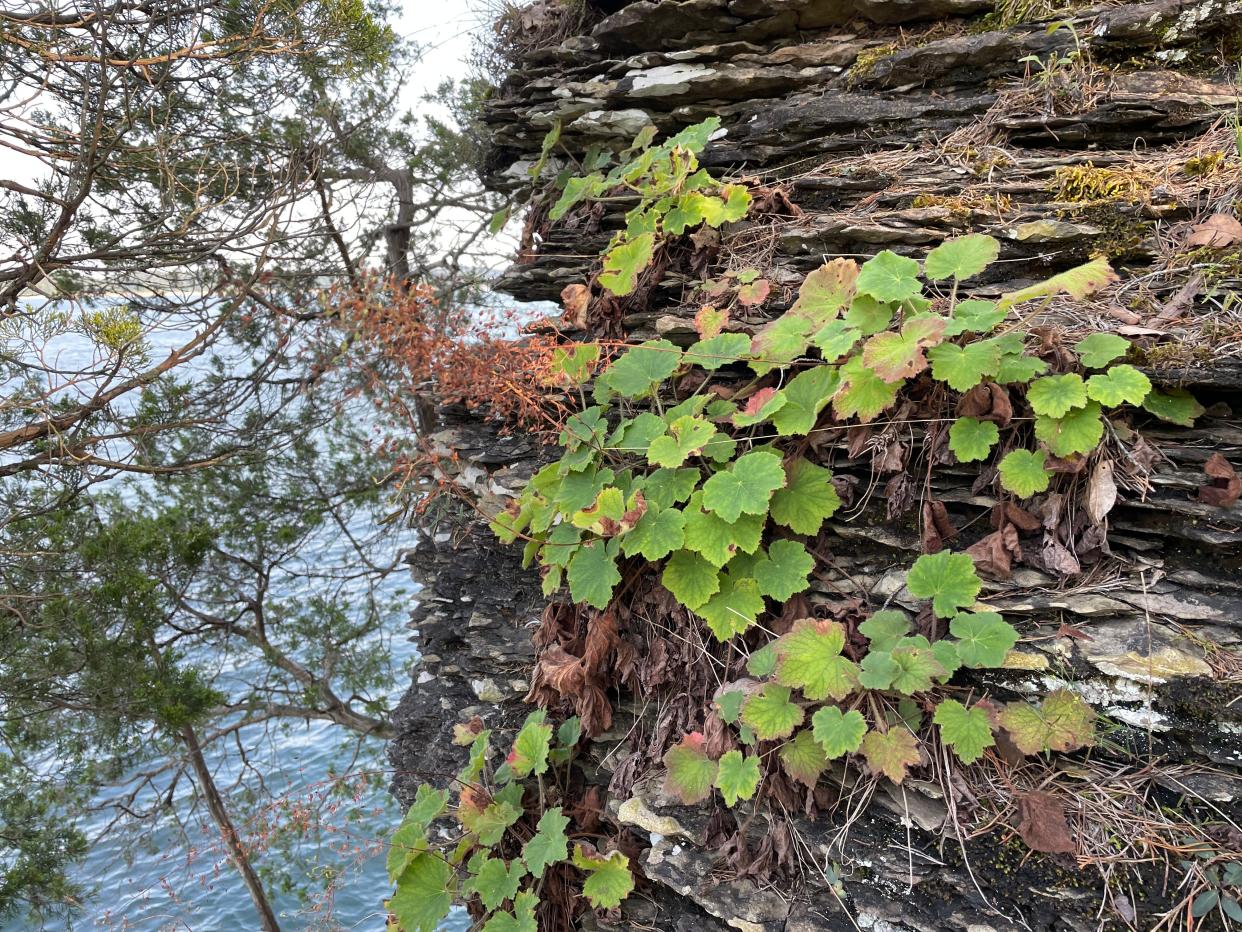
Fool me once, shame on you. Fool me twice, shame on me.
And if at first, you don’t succeed, keep banging your head on the wall until you make a big enough hold to drag yourself through ...
As gardeners, we are nothing if not persistent, and that can be a good thing. Constantly trying new things, forever tweaking the garden to get the combinations, timing, or contrast just right — that's the joy of gardening. But blind obsession is rarely a recipe for happily ever after.
The explosion of new garden plants coming onto the market every year for the last three or four decades has been a little much for some of us to handle. The constant parade of new foliage forms from golds to reds, burgundies and more, unique size packages from bigger and better to smaller and cuter, even the annual list of crazy new plant names — they act like so many Pavlovian pastries to those of us with a horticultural sweet tooth. We just can't help ourselves, whether that cool new plant turns out to be the greatest thing since sliced bread or a dog that just doesn’t hunt.
Nowhere has the explosion of new forms been more noticeable than with the venerable coral bells.
You may like: My plant looks bad. How can I tell if it's dead or alive? Here are three things to know
What are coral bells?
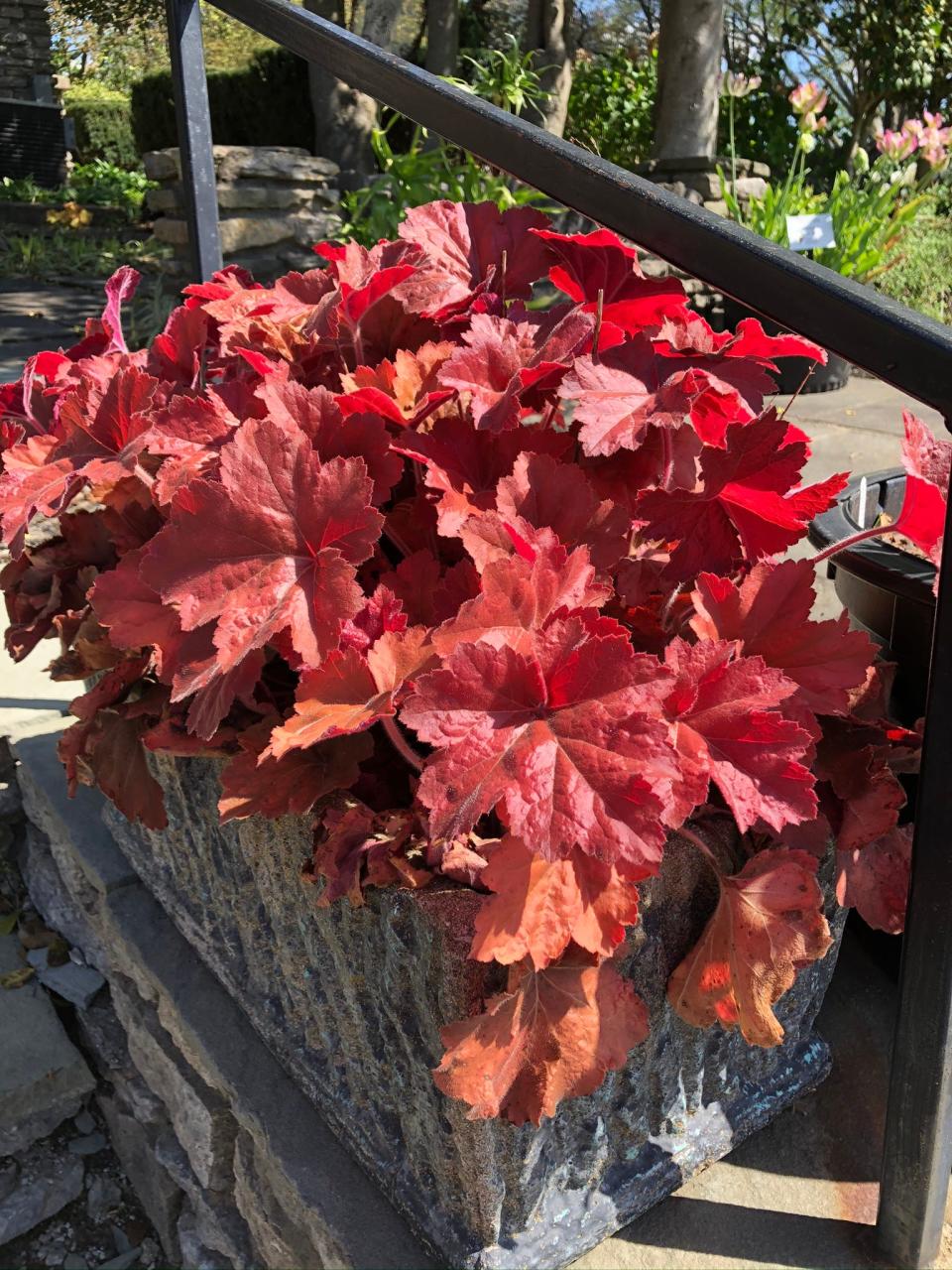
Coral bells, back in the day, consisted of occasionally planted specimens of Heuchera sanguinea, a southwestern North American native typically found on rocky, gravely soils. Its low mound of green leaves topped with bright pink/red blooms on 18-inch-tall, wiry stems was always a no-brainer for a sunny garden where they delighted gardeners and hummingbirds alike in early and midsummer.
Then, something happened.
At a nursery in jolly old England, a gardener stumbled upon a deep burgundy foliaged coral bell seedling in a tray of greens, and it was off to the races. Pretty soon, plant breeders, pros to hobbyists, were donning tiny paint brushes and dusting pollen from one Heuchera sanguinea onto the flowers of a number of other species. There’s H. micrantha from the Pacific Northwest, H. villosa and H. americana from eastern North America — and there are other species and forms — and most of them are happy to play a bit of horticultural hanky panky with the others. A breeder’s (plant breeder’s, that is) dream.
Why don't all coral bells thrive in the same soils?
But here's the problem. All these species grow in different conditions. The original garden Heuchera — H. sanguinea — is a Southwest native that loves rocky soils and a fair amount of sun. Heuchera americana is an obligate denizen of eastern woodsy sites — shady and a bit damp in spring. Heuchera villosa loves dry feet and rocky cliffs in filtered light. When you throw a bunch of pollen from a bunch of species in a bag and make a bunch of crosses, what do you end up with?
You may like: You're probably mulching wrong. Here's 5 things to know about how to mulch properly
Every year we all tromp out to the nursery or salivate over online offerings. And every year we plunk down hard-earned cash for the newest orange-foliaged Heuchera, caramel-colored coral bell and we run home and jam them in a bed consisting of soil that sits somewhere between wet Portland cement and day-old oatmeal garnished with pea gravel. And we sit back and bask in the glow of our new beauties ... for about three weeks, after which they start their inevitable march to the compost pile in the sky.
Let’s face it, in our heavy soils, call them coral bells or call them Heucheras, eventually, we end up calling most of them nothing but dead.
But that’s not how it has to be.
What varieties of coral bells should I grow?
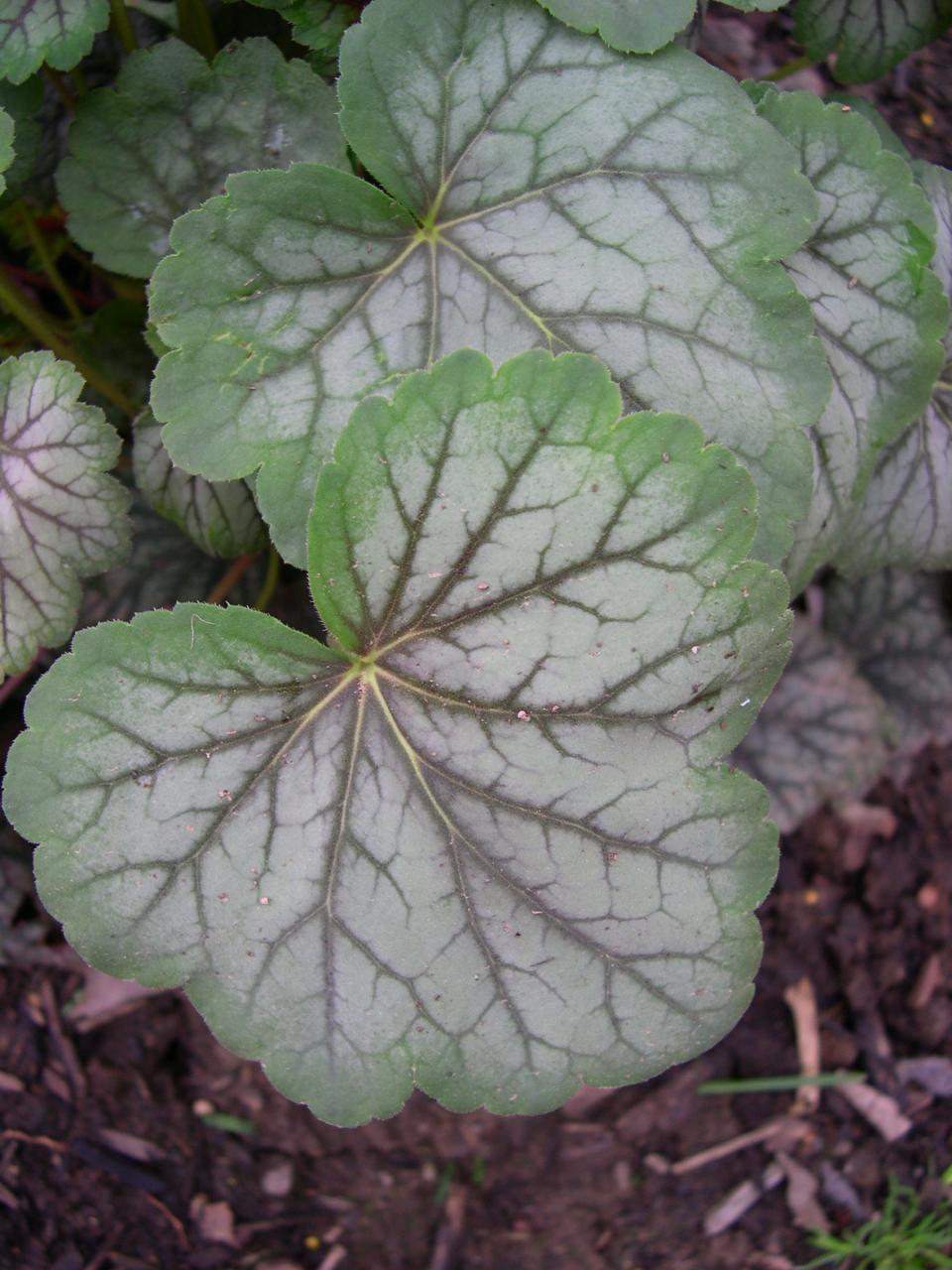
Heuchera americana is a gem of a garden plant on its own — not all made up with pollen from afar. The variable combination of green, silver and deep red, offers up a delightful bit of foliage in the garden even if the greenish/white flowers aren’t much to write home about. Give them reasonable soil, and a little filtered sunlight and they’ll perform for years. My favorite is "Green Spice," which I’ve had in my Louisville garden for 25 years. "Dale’s Strain" is a gem as well.
If you’re fortunate enough to find a straight specimen or two of H. villosa, and especially if you can find the variety macrorrhiza, jump on it. Sure, it’s just a green foliaged thing, but it’s a doer through and through. The cultivar "Autumn Bride" offers fabulously fuzzy green leaves and large wands of green/white flowers late into the fall. It is an absolute gem and a great late-season pollinator plant — but it does need well-drained soil.
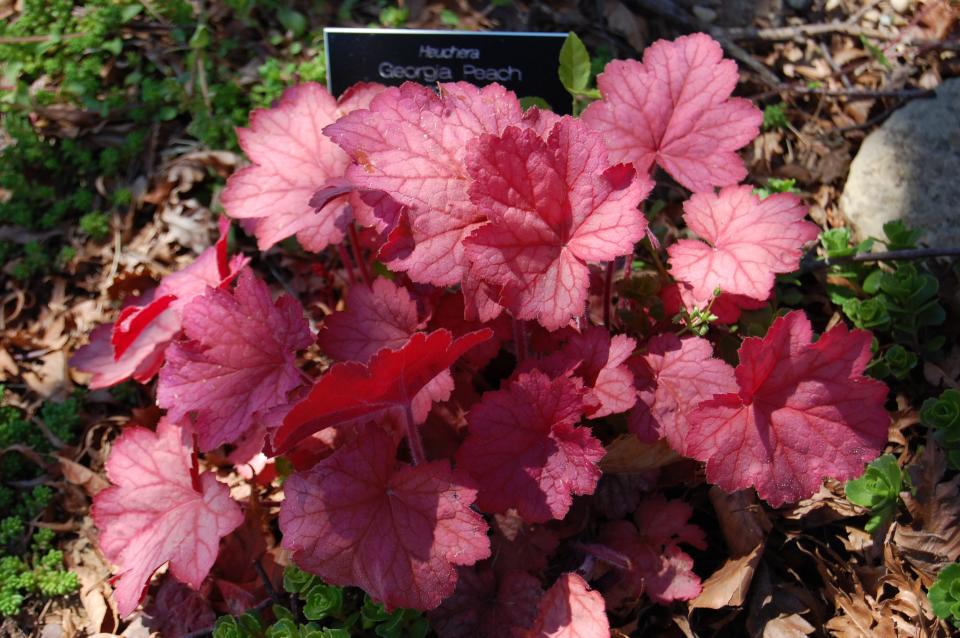
Should I grow coral bells in containers?
But when it comes to the fancy-schmancy bright yellow, chartreuse, burgundy or coppery foliaged forms, we have found that they all are much better grown, not in garden beds, but as container plants — and they don’t just survive the vagaries of container culture. They actually thrive in it.
Growing Heucheras in containers offers several advantages. First, you eliminate the problem of mucky, clay soil. As long as you buy a good quality, soilless mix (all or mostly organic matter) you’ll get great drainage. Second, since most of the fancy foliaged Heucheras love to be on the dry side, growing them in a container isn’t like that pot of impatience that you have to water every 45.5 minutes throughout the entire summer.
And finally, what’s wonderful about many of these fancy Heucheras is that you can leave them in their containers all winter long. While many container plants need some root protection through typical winters, Heucheras seem to love the exposure. And since many of them are either semi-evergreen or at least hold their good-looking foliage very, very late into the season, they provide an instant winter interest element in the garden.
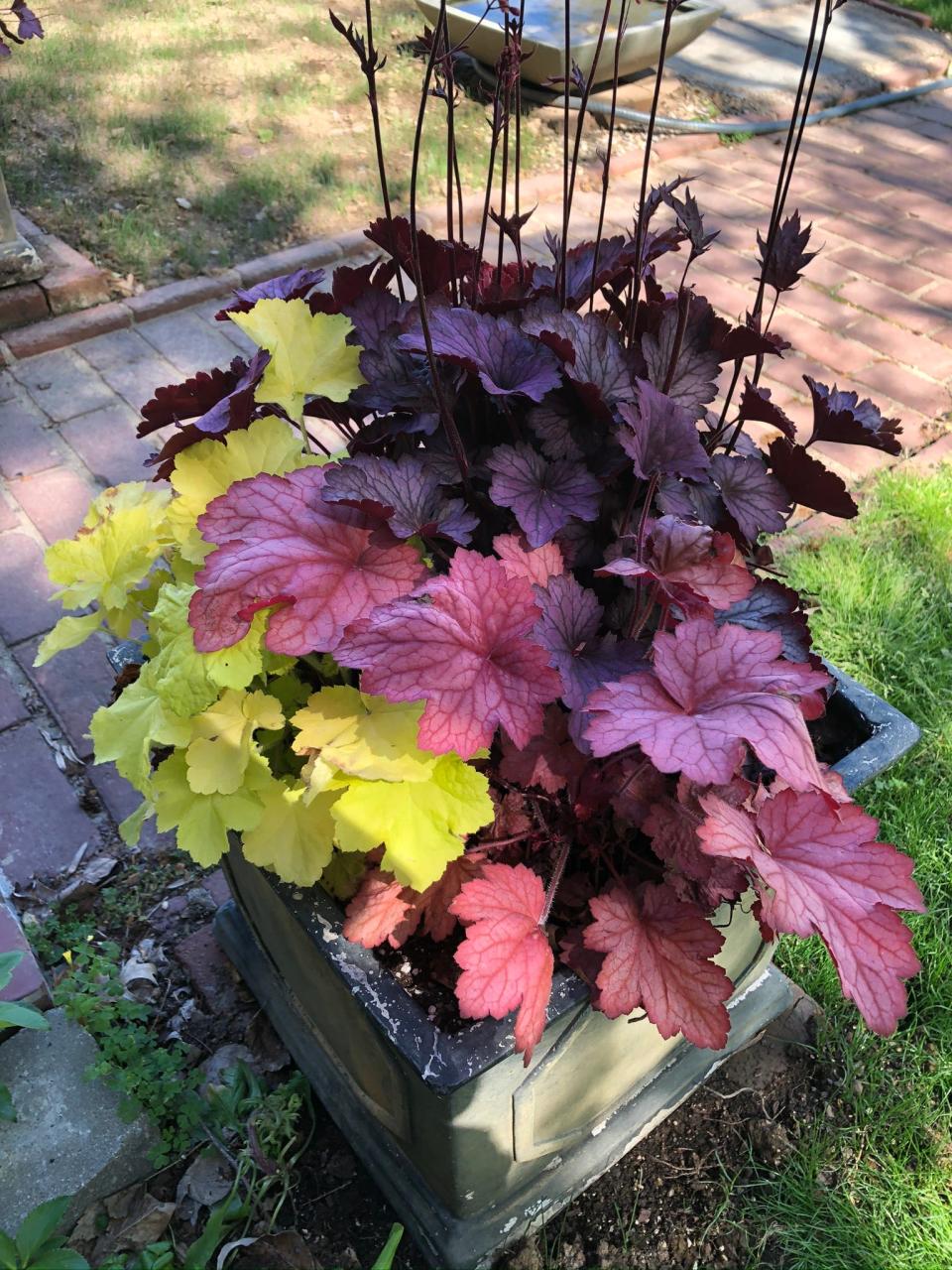
You may like: Looking forward to spring planting? Here are 6 award-winning variations you need to try
Indeed, switching the Yew Dell Heuchera plantings into year-round containers has yielded some amazing results. We have a few specimens of Heuchera "Southern Comfort" (a coppery-colored H. villosa hybrid) that have been in the same concrete container, on the same stone steps, for at least 10 years!
You know, they say the definition of insanity is doing the same thing over and over and expecting a different result. Maybe this is a good time to try something a little different!
Paul Cappiello is the executive director at Yew Dell Botanical Gardens, 6220 Old Lagrange Road, yewdellgardens.org.
This article originally appeared on Louisville Courier Journal: Tips on how to grow coral bells, Heucheras in the garden

